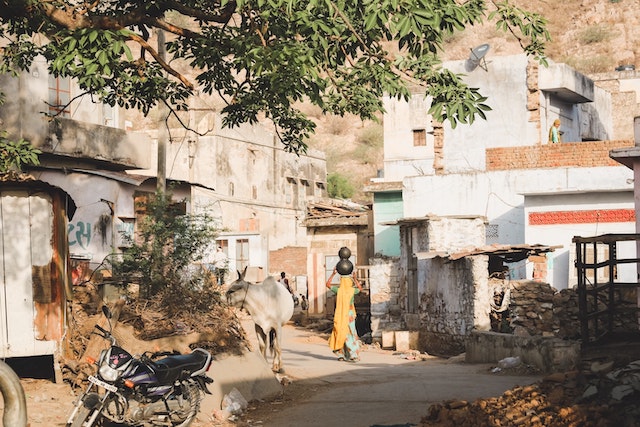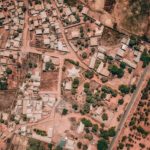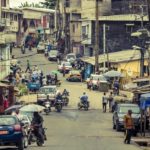Everything You’ve Ever Wanted to Know About International Development (But Were Afraid To Ask)

You’re probably well traveled. You know a decent amount about history. Maybe your idea of a lovely Sunday morning includes flipping through the New York Times over fair trade coffee in a mug you bought at Ten Thousand Villages and reading about international development.
And yet. You find yourself wondering: What does UNICEF stand for again? What exactly does the World Bank do? And what the heck makes a country “third world”?
Voila: your quick and dirty guide to International Development. Your Sparknotes. Your Skimm. You’re welcome.
Most International Development scholars agree that the concept of international development began in earnest at the middle of the twentieth century: exploitation and colonialism were on the way out; the International Bank for Reconstruction and Development (later the World Bank) and the International Monetary Fund (IMF) were both established in 1944, followed by the United Nations in 1945; and America’s 1948 Marshall Plan pumped money into war-torn Europe’s crumbling economy, hoping to aid in restoring its previous affluence.
1950s-1960s: The Beginnings of International Development
In the 1950s, development theory most prominently took the face of modernization theory, which argued that all countries follow the same course to development, along a path of modernization. But proposing just one path to development – not-so-coincidentally the one that most Western nations had taken – proved problematic, and soon modernization theory gave way to the 1960s’ dependency theory.
Dependency theory resisted modernization theory, holding instead that there was a fundamental distinction between less developed countries and more developed countries (the former was not merely a more primitive version of the latter) and that the less developed countries, know as the “periphery,” should focus on benefiting the richer “core” through provision of cheap labor, export of raw materials, and markets for finished goods.
In exchange, they had a guaranteed market for their raw materials and became the recipients of wealthier countries’ influence in sectors like economics, media, politics, education, and culture. Critics argued, however, that this was unsustainable and stifled competition.
1970s-1980s: Neoliberalism and Structural Adjustment
During the 1970s-1980s, the ideas of neoliberalism (think Margaret Thatcher and Ronald Reagan) led the way for the Structural Adjustment Programs – SAPs for short. The SAPs were developed by the World Bank and IMF (both of whom had lent money to strapped-for-cash countries) in response to the collapse of these countries’ economies.
They needed their money back, so they developed the programs to dictate how the countries would get back on their feet financially (if not designed to do much for their social wellbeing); the SAPs included currency devaluation, cuts in government spending (like in education, healthcare, and subsidies that keep food costs low), privatization of state-owned enterprises, increased exports, and natural resource extraction. So, not exactly a plan designed to help the average Joe.
1990s: Capabilities and Human Development
Many people weren’t thrilled with the SAPs, so a counter-movement began, fueled in large part by the United Nations and its bodies, including the United Nations Development Program (UNDP) and The United Nations Children’s Fund (UNICEF). The dialogue began to shift to talk about increasing – in the words of Nobel Prize winning Indian economist Amartya Sen – the capabilities of those in developing countries.
Today, a common snapshot of development is measured in terms of Sen and Pakistani economist Mahbub ul Haq’s Human Development Index, which combines life expectancy, education, and income for a more human-focused measure than Gross Domestic Product (GDP) alone.
2000s: Development Impasse and Millennium Development Goals
Soon after Sen and ul Haq’s theories, some argued that a development impasse was emerging: the end of colonialism and the steady increase of living conditions worldwide made some believe that the days of development might be over. After this break, however, the focus again continued towards alleviating poverty.
You’ve probably heard of the United Nations’ Millennium Development Goals (MDGs), a set of eight ambitious objectives (think eradicating hunger and promoting gender equality, healthy mothers and children, and universal education) developed in 2000 to be met by 2015.
The MDGs have been criticized for their areas of focus and, well…inability to be met. American economist Jeffrey Sachs, a major architect of the MDGs, offers an image of a ladder to development: if you can inject enough cash through aid, people will be able to reach the first rung and climb the rest of the way themselves.
It’s compelling, but critics like William Easterly and Dambisa Moyo say that fighting poverty with aid merely creates dependency and fuels corruption; they believe that free-market investments in the developing world are more valuable in the long term.
Development on the Ground: A Peace Corps Perspective
Here in Cameroon, where I work as a Peace Corps Volunteer, I see the effects of living in a developing country (“third world” is now considered passé) every day. The image of poverty as skinny-limbed children in drought-ridden areas tells just a sliver of the real story. Here, nutrient deficiency due to inexpensive starch-based diets can be hidden under plump folds of skin.
Most people only seek medical treatment for life threatening conditions, and children are routinely driven from school because they haven’t paid their school fees in time. The percentage of Cameroonians with a university degree is low, and formal employment is only achievable for those with connections in high places.
Corruption runs rampant, often crippling legitimate business ventures. As is typical in many developing countries, the vast majority of Cameroonians (think upwards of eighty percent) are involved in agriculture, but the roads to viable markets are poor and farmers are often denied a fair price for their goods.
The Peace Corps aims to fight this by sending Volunteers to areas that have requested trained men and women to help with education, health, and agriculture, among other sectors, always alongside a host country counterpart, in addition to participating in a two-way cultural exchange.
International Development Today
Today, one could summarize the direction of international development with a few crucial tenets:
1. Community participation (rather than outsiders bringing in preconceived notions of what a group of people may need)
2. Dignity (by avoiding handouts and instead focusing on empowering people to be self-sufficient)
3. Sustainability (meaning that projects will get more bang for their buck by thriving long after the implementing body has left)
4. Cultural appropriateness (there’s no silver bullet or one-size-fits-all in development).
I don’t know yet the direction international development will head next, but few can deny that there’s more work to be done.
Everything You’ve Ever Wanted to Know About International Development (But Were Afraid To Ask)
Related Reading
- The Peace Corps and Beyond: A Conversation with Kelly Branyik
- What’s it Like to Be a Peace Corps Volunteer?
- Joining the Peace Corps and Pursing My Master’s in Moldova
- The 5 Biggest Myths about the Peace Corps
Have you volunteered with the Peace Corps? What were your impressions? Email us at editor@pinkpangea.com for information about sharing your experience and advice with the Pink Pangea community. We can’t wait to hear from you.








